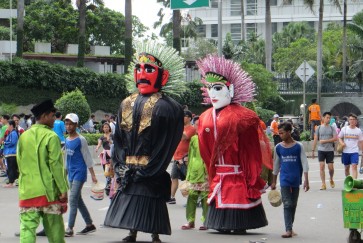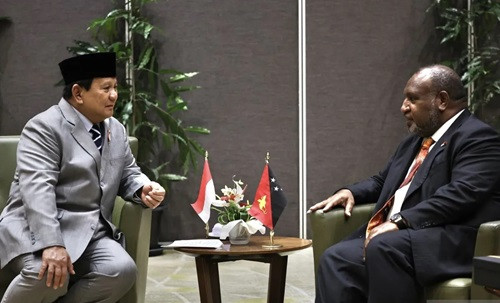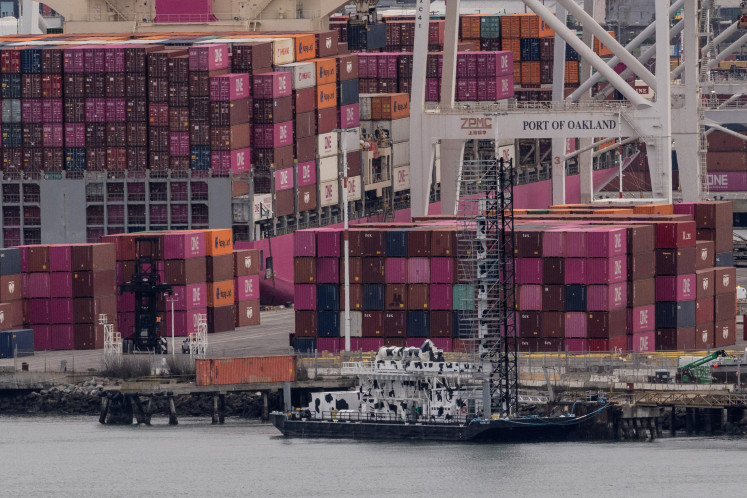Yogyakarta Palace recovers centuries old manuscripts
Finally home: Sultan Hamengkubuwono X observes a digital copy of a classic babad (chronicle)
Change text size
Gift Premium Articles
to Anyone

Finally home: Sultan Hamengkubuwono X observes a digital copy of a classic babad (chronicle).
Seventy-five of Yogyakarta Palace’s centuries old manuscripts have finally returned home after being stolen by British troops around 200 years ago, albeit only in their digital form.
The Brits stole the manuscripts after winning a battle known as the Geger Sepoy (Sepoy Mayhem) in 1812, during the reign of Sultan Hamengkubuwono II.
The manuscripts contain historical and cultural accounts during the reign of Sultan Hamengkubuwono I. The valuable documents were pillaged when British forces attacked the palace.
They plundered not only hundreds of babad (chronicles) and serat (texts) but also palace heirlooms, treasures and cash. The tragic incident occurred during the British colonial rule over Java under Lieut. Gen. Sir Stamford Raffles.
The invasion of the palace was led by Col. RR Gillespie, peaking on June 20, 1812. The event is historically known as Geger Sepoy. It was the dark side of Raffles’ colonial rule in Indonesia.
According to Peter Carey, a British historian specializing in Javanese history, the palace was assaulted by allied forces comprising the British infantry, sepoy (Indian soldiers), aristocratic defectors and the Chinese community.
The royal defense was overwhelmed and the palace looted. The sultan and his family were detained and their treasures seized for delivery to British colonial governor Lord Minto based in Calcutta, India.
The loss caused devastation to the palace and its occupants were captured and held in contempt. Gillespie enjoyed the lion’s share of the loot with 15,000 pounds, which is equal to 1.5 million pounds (US$1.9 million) today, and he distributed the remainder to his officers and soldiers, including legion leader Prangwedono, who was from the Mangkunegaran Palace.
The rest of the manuscripts, antiques, gold, silver and diamonds and other properties were then moved out of Java in four days.
Fortunately, the plundered palace chronicles and texts were found. Carey said most of the manuscripts were in the hands of British officer Col. Colin Mackenzie. Sixty-six documents in Javanese were taken to Bengal in July 1813. They were later known as The Mackenzie Collection stored in London.

The other person in possession of palace chronicles was Yogyakarta regional chief John Crawford, who took 45 Javanese manuscripts and in 1842 sold them to the British Museum. As governor general, Raffles held 55 documents and after his death his wife, Lady Sophia, transferred the palace collection to the Royal Asiatic Society.
Finally, after more than 200 years, British Ambassador to Indonesia Moazzam Malik officially returned some of the manuscripts in digital format to the reigning Sultan Hamengkubuwono X in early March.
The digital archives, along with other babad and serat, graced an exhibition that ran until April 7 at the palace.
Opening the exhibition, which was held under the theme “Merangkai Jejak Peradaban Nagari Ngayogyakarta Hadiningrat (Tracing the Path of Civilization of Yogyakarta Sultanate)”, Hamengkubuwono X appealed to the public to comprehend the texts and recognize their context for the purpose of building future civilization with greater dignity.
The positive role of Raffles during his time in Java was also highlighted with his work, History of Java (1817).
“Despite the unbearable pain plaguing the Yogyakarta Palace, History of Java has become the earliest and most important source of history describing the religion, culture, tradition and codes of conduct of the Javanese community”, he said.
By reading and studying the old manuscripts, he expressed the hope that they could usher in landmark transformation.
Among the palace manuscripts on display was Babad Ngayogyakarta: Hamengku Buwono I Dumugi Hamengku Buwono III (The Yogyakarta Chronicle: Hamengku Buwono I to Hamengkubuwono III).
Babad Ngayogyakarta contains the history of Yogyakarta starting from the Giyanti Agreement dividing the Islamic Mataram Kingdom into Yogyakarta and Surakarta in 1755. It details the reign of Sultan Hamengkubuwono I, previously Prince Mangkubumi, until the fall of the Yogyakarta Palace in the Sepoy Mayhem, under Hamengkubuwono II. The chronicle was penned in 1817 when Sultan Hamengkubuwono IV ruled.
Other manuscripts concern art and culture, such as Serat Kandha Ringgit Tiyang: Lampahan Semar Boyong. This 201-page text is a narration of Wayang Wong (classical dance drama) for a whole-day performance with the episode Semar Boyong (royal servant Semar moving). It was written when Sultan Hamengkubuwono VIII held sway in 1933 and was once staged in honor of Dutch Governor General BC de Jonge.

— Photos by JP/Tarko Sudiarno









